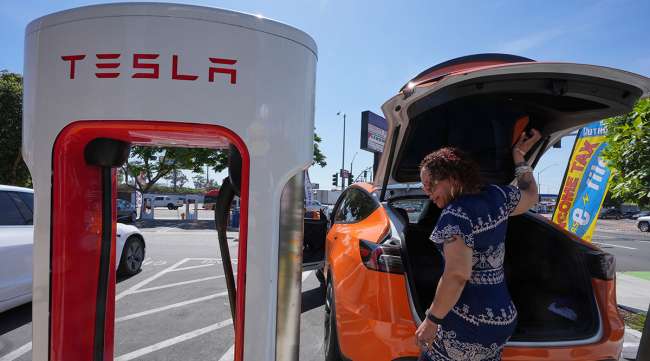Current Developments in Electric Vehicle Incentives
The decision to eliminate federal tax credits for electric vehicles (EVs) marks a significant turning point in the landscape of battery-powered transportation in the U.S. Although it poses challenges, various factors are still driving consumer interest in electric vehicles.
Federal Tax Credits and Their Role
Recently, the U.S. Senate approved a bill that scraps tax credits of up to $7,500 for EV buyers, initially established under the Inflation Reduction Act of 2022. These tax incentives significantly boosted EV sales by making them more accessible and enhancing their affordability. Now, with their repeal, the electric vehicle market braces for some turbulence.
Declining Sales Forecasts
- Market predictions suggest a noticeable decrease in EV uptake, knocking the U.S. out of the top three global EV markets by 2040.
- Future adoption rates are expected to fall from an anticipated 48% of new vehicle sales in 2030 to about 37% without the incentives.
Factors Fueling Growing Demand Despite Policy Changes
Experts like Elaine Buckberg, previously of General Motors and now at Harvard’s Salata Institute, forecast that consumers will still engage with the market. Buckberg posits that even with the absence of federal assistance, the allure of electric vehicles will remain strong due to enhancements in technology, performance, and availability.
Price Trends in the EV Market
Interestingly, prices for electric cars have dropped during the era of tax credits—from an average of $64,700 in early 2023 to approximately $59,900 by April of the same year. This 7.4% deflation occurred while a greater variety of models was introduced, enhancing competition in the market.
Comparison of EV Models
| Year | Number of EV Models | Models Below Average Price |
|---|---|---|
| 2022 | 34 | 11 |
| 2025 | 68 | 19 |
Market Dynamics and Consumer Preferences
The EV market has witnessed a seismic shift in available models, allowing buyers to select from a wider range of styles, brands, and sizes. This increased access is coupled with dealer incentives that often rival government initiatives, making several electric models even more affordable.
Consumer Sentiment Regarding Electric Vehicles
Recent studies show nearly 60% of prospective U.S. car buyers are open to purchasing an EV. The concerns around purchase price and overall cost of ownership have notably lessened over time, indicating a favorable attitude towards transitioning to electric.
The Impact on Lower-Income Consumers
Despite the overall interest in electric vehicles, the withdrawal of incentives is likely to hit lower-income buyers the hardest. It’s often these consumers who depend on federal subsidies to make EV purchases viable. The unintentional consequence here is that higher-income individuals may continue to afford electrics, while financially-strapped buyers may be left out in the cold.
Charging Infrastructure and Policy Challenges
As part of ongoing changes affecting EV adoption, there is also the juxtaposition of the administration’s plan to freeze investment in charging stations—proposed to facilitate easier access to electric transportation. The cessation of federal support in building out the necessary infrastructure only complicates matters, as consumers now have fewer options to recharge their vehicles conveniently.
What’s Next for the EV Market?
Outside of the U.S., the international electric vehicle market thrives, driven by plummeting battery costs and newer affordable models rising from manufacturers, particularly in China. It’s projected that about 25% of car sales globally will comprise EVs by the end of this year, which is a 25% increase from 2024 levels, primarily driven by Chinese factories.
Looking Forward: Implications for Logistics
As we analyze potential developments in the automotive realm, the logistics sector must adapt. A greater push for electric vehicle transportation could reduce emissions, but without robust federal support, producers might struggle to meet consumer demand effectively. Thus, logistics providers need to be agile, balancing supply chain costs while accommodating the growing presence of EVs on the roads.
Conclusion
In summary, the elimination of federal tax credits for electric vehicles undoubtedly foreshadows challenges. However, underlying consumer demand remains resilient due to improved vehicle offerings and competitive market conditions. Even as policy changes unfold, there’s hope for electric vehicle adoption, which will eventually influence logistics processes, including shipping, distribution, and delivery services. For those looking to make moves, GetTransport.com can help facilitate these transitions smoothly. With reliable and affordable cargo transportation solutions, GetTransport.com ensures that diverse transportation needs are met without financial strain. Book your cargo transportation with GetTransport.com.com.

